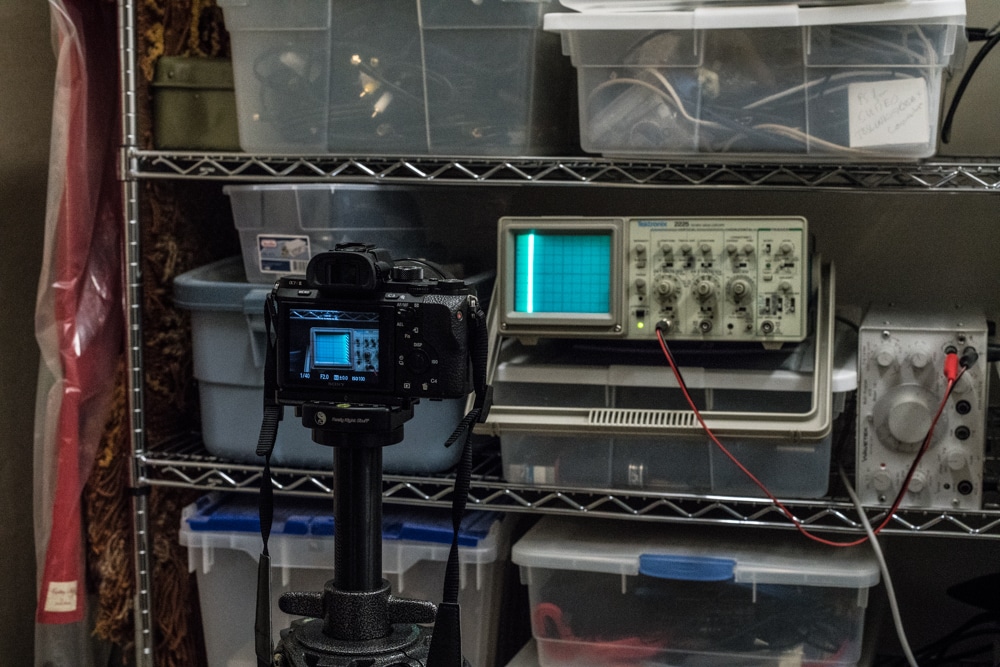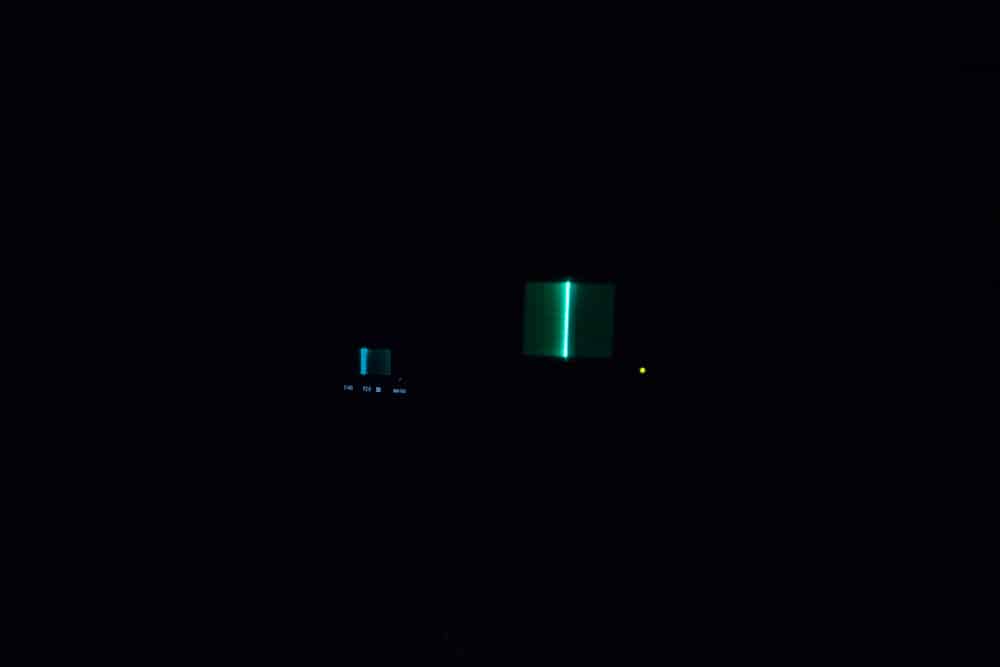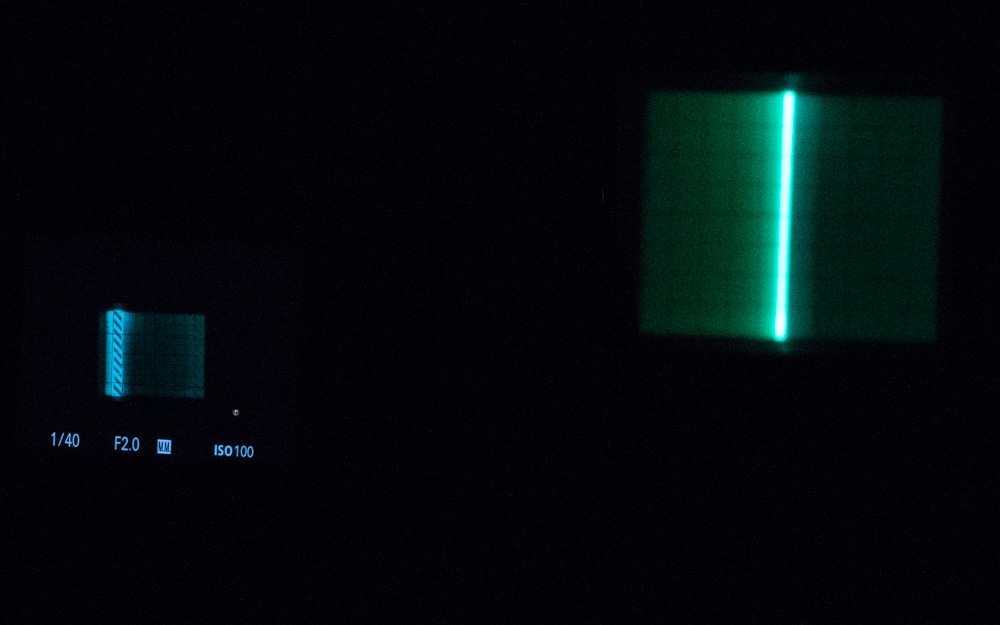There have been complaints about the shutter lag of the Sony a7RII and the a9. Independent tests have measured their shutter lag, defined as the elapsed time between the depression of the shutter release and the beginning of the opening of the first curtain of the shutter, to be quite low. I wondered if the issue that people were experiencing could be finder lag, which I’ll define as the difference between present time and the time which is represented by the image on the finder.
I set out to measure the finder lag for the a7RII. I set up a camera aimed at an oscilloscope (if you’re going to try this at home, you have to use an old-fashioned analog scope, not a modern digital one).
I connected the scope to a function generator set to a fairly-high-frequency triangle wave, and I set the time base to 10 milliseconds per division. That means that it takes the trace 100 msec, or a tenth of a second, to traverse the face of the scope from left to right. The picture above was taken at a faster sweep speed, 5 msec per division.
I took another a7RII, and set the shutter speed to 1/500 second, with EFCS on. That means that the exposure takes place in a 2 msec band moving from the top of the image to the bottom in about 4 msec. Both numbers are so fast compared to the scope trace that they can be considered instantaneous.
Here’s a picture of the scope and the camera LCD:
I focused on the camera, not the scope, since the image on the LCD panel is smaller in the frame than the image of the scope itself. Let’s blow that picture up:
Now we can see that the camera shows the sweep at the first division on the scope when it’s actually in the middle. The first division is 10 msec from the left. The middle is 50 msec from there. So the image on the LCD panel is 40 msec behind what’s actually going on.
In some modes the a7RII scans faster than in others, so it’s likely that the finder lag is lower in those modes. It’s also possible that the lag is different when you’re using the EVF, but I have no way of measuring that. The a9 should have less lag.



Maybe try half-pressing the shutter while you take this picture, to get the camera to go into a more active mode?